3. No clue as to age or who built them but I’m thinking about it. How many ancient ruins are covered by foliage that were only discovered recently? Plenty. How many cultures were undiscovered even into the 20th century? It does happen. That proves nothing but it is a thing.
4. I think the narratives are important because I see a conflict between the various historical narratives and I think that is key also. Just like the 500 or so years that was added to the year zero and plague of Justinian. What was up with that anyway? Was it just simple confusion and bad dating or was it intentionally induced into the historical narrative of humanity? IDK. So, along similar lines, on one hand there are all the fairs that are dense from the 1870’s (and earlier) up to the early 1900’s. The so-called gay 90’s.
This is kind of what I think the disconnect is on 19th century Architectural History vs. Ancient History.
When we're looking at the "Added 460 Years" thread, we're seeing a
complete break following the Plague of Justinian. Possibly 90% of the population dies. Europe burns. The Ancient World is gone. 2-300 years later, piles of documents in forgotten libraries are discovered/sought out and have to be reconciled against the accepted world view of a new culture emerging out of the Dark Ages. They try to translate what they find but can barely read Latin and are illiterate in Greek. They attempt to create a history that must match their worldview of Christianity (which is unassailable at that point) all the while entrenching their hegemonic position.
When you read Bede/Gregory of Tours they have no understanding of
Rome - only of the empire's relationship to Christianity. If you read the
Ancient City you can see it took hundreds of years of research to finally get some sort of idea as to what Roman life actually was and it is radically different than what the early medieval writers suspected.
All of this is understandable with a complete break through total destruction and the death of a civilization. But supposing that the same type of thing is possible in North America is a completely different proposition. Especially in terms of forging records/interpolations and creating a new history.
The first issue is that there are almost no detailed written records before the late 1500's. Secondly, mass deaths of North American peoples occurred concurrently at the Plague of Justinian and at the time of Black Death. Add to that De Soto's expedition in the 1540's which introduces European diseases that wipes out the majority of what was left of the mound building culture as there are no stratigraphic or carbon dating of the major mound centers having construction work after that.
So outside the Southwest USA (which lies on the periphery of Mexican cultural influence) the order of events from the 1600's remains consistent for almost every new territory settled. European settlers arrive and expand west. As they come into contact with North Americans, they hear stories from them of older civilizations with varying time frames of relatively recent ancestors, to races of giants, to re-peopling of the continent after a global flood/disaster. As the North Americans don't calculate "the past" like the Europeans - no one really knows the chronology.
What the European/European descended people find up until the early 20th century are thousands of earthen mounds. None really in use except for occasional burials and known to strike awe/fear into the native people they encounter. Many of these mounds are connected to another world in a way that other places aren't. Whether this a bad memory of the past or an unpredictable portal linking a potentially deadly phenomenon, the native people of the 19th and 20th centuries want nothing to do with them.
(We have a local report from here of natives desperately pleading with a local amateur archeologist in the 1860's to leave a particular mound alone as they believe opening it will unleash something really horrible. Disturbing them is a serious violation)
Also located at that time are anomalous stone structures that may or may not be related to the mound culture. Either way, the structures are rarely intact and their overall purpose is not known. They are not in use by the native North Americans the settlers encounter.
Beyond early fur trading records, the first written reports from all these new settlements are local newspapers. Reports written
by locals. Hundreds of these reports exist that tell the same story. Mounds, earthworks, well-crafted artefacts and unusual stone structures (not necessarily buildings or remnants of). Occasionally there are giant skeletons found. For the people settling west of the Appalachians (following the Revolutionary War) this same pattern is repeated over and over again. For those settlers they are amazed at what they find and can't reconcile it with the state of the scattered tribal native people still living in the area. Unknown to them at the time is that through disease/war/extreme climate, the native population had been in their own kind of entropic Dark Age for hundreds of years.
By the middle of the 19th century "mound builder" lost civilizations theories arise. Phoenicians, Egyptians, Welsh, Lost Tribes of Israel. Nothing really sticks as the artifacts don't fit close enough. But the mounds are so prevalent that the
Smithsonian Explorations into
Earthen Mounds organization is formed
.
This is the beginning of the creation of North American pre-Columbian history narrative as well as archaeology. My community in Canada was isolated (no rail connection) and in another country, yet our first "mound explorer" was working for the Smithsonian in the 1860's, sending our mound artefacts and reports back to Washington. Mound exploration wasn't a minor undertaking, it was all across North America and the focus of archaeology at the time.
So if we look at "spinning a narrative" this is where the official narratives start. At this time in North America the dominant world view is western European Christianity. So when you read all these original reports, they interpret their findings to match the biblical narrative.
Giants are fine, as they are in Genesis. Trans-Atlantic Phoenicians, Israelites and Welshman are all fine as well. It all matches the biblical chronology and world view. No one really knows anything, as Archeology is in its infancy.
Slowly but surely, the world view of those that direct the Smithsonian switches from Christianity to Darwinism. By WW I - there are no more giants - and natural history (animal fossils) become the focus to support the new Darwinist outlook. No one still knows who built the mounds, but it definitely has nothing to do with giants.
So the falsifications begin (Jim Vieira covers this extensively in Giants on Record) at the top level of academia. The Smithsonian destroys or hides the hundreds of giant skeletons, and any artefacts that don't fit the narrative. The problem is that all the local newspapers were archived, as were all the local historical society records of the original excavations. So what does the Smithsonian state? All those hundreds of detailed reports by local professionals and accepted by the Smithsonian at the time - were mis-measured. All of them. There were no giant skeletons.
The point I'm trying to show is that the original records aren't falsified, nor are they being altered. The PTB just regularly change their spin on the
meaning of what was found.
Oh they were unprofessional, dimwits in the 1800's, let us impart the new and better truth in this NYT article debunking actual evidence.
Sorry for the length of this post and I know is generally quite boring

But I think it's important to recognize that almost every one of the thousands of 19th century North American settlements that were founded contain unbroken chains of records up to this day. Personally, I've spent hundreds of hours poring over these type of archives (both locally and in other places). Local historical societies and local papers at that time tend to strive for accuracy in their
reporting. But are often way off base in their interpretations.
All the spinning and lies that existed then tended to be in the big papers which were the organs for the PTB to entrench their power and expand the social controls that they needed.
Back to what directly relates to this thread, in everything I can find from
original, primary source records, is that there is nothing even hinting at building new structures on old ones (with the exception of some earthen mounds). There are reports of weird EM anomalies associated with mounds and earthworks. There are out of place artifacts of very fine quality. There are carbon dates going back to only 2 or 3 thousand years after Younger Dryas. There are even Sasquatch and "little people" with futuristic weapons emerging from mounds.
But there is nothing I've ever come across remotely resembling "Lost Tartary", "Mud Flood" ruins or anything pertaining to pre-existing masonry structures near Expo buildings before or after excavation. The other thing is the relative recent arrival of these theories. Does anyone know when these 1st showed up? 10 years ago? 15?
Part of this issue does hold a personal element for me. If I've done all these years of research on North American pre-history and if I completely missed something this big, then I'll have to completely re-evaluate my research methods (not looking forward to that)!






 ), since Kitty Ferguson commented upon the matter in her book. Quoting her below:
), since Kitty Ferguson commented upon the matter in her book. Quoting her below:
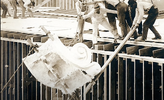
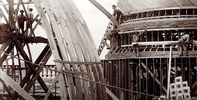
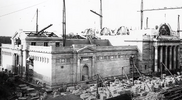
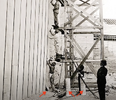
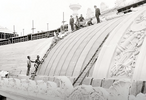
 But I think it's important to recognize that almost every one of the thousands of 19th century North American settlements that were founded contain unbroken chains of records up to this day. Personally, I've spent hundreds of hours poring over these type of archives (both locally and in other places). Local historical societies and local papers at that time tend to strive for accuracy in their reporting. But are often way off base in their interpretations.
But I think it's important to recognize that almost every one of the thousands of 19th century North American settlements that were founded contain unbroken chains of records up to this day. Personally, I've spent hundreds of hours poring over these type of archives (both locally and in other places). Local historical societies and local papers at that time tend to strive for accuracy in their reporting. But are often way off base in their interpretations.